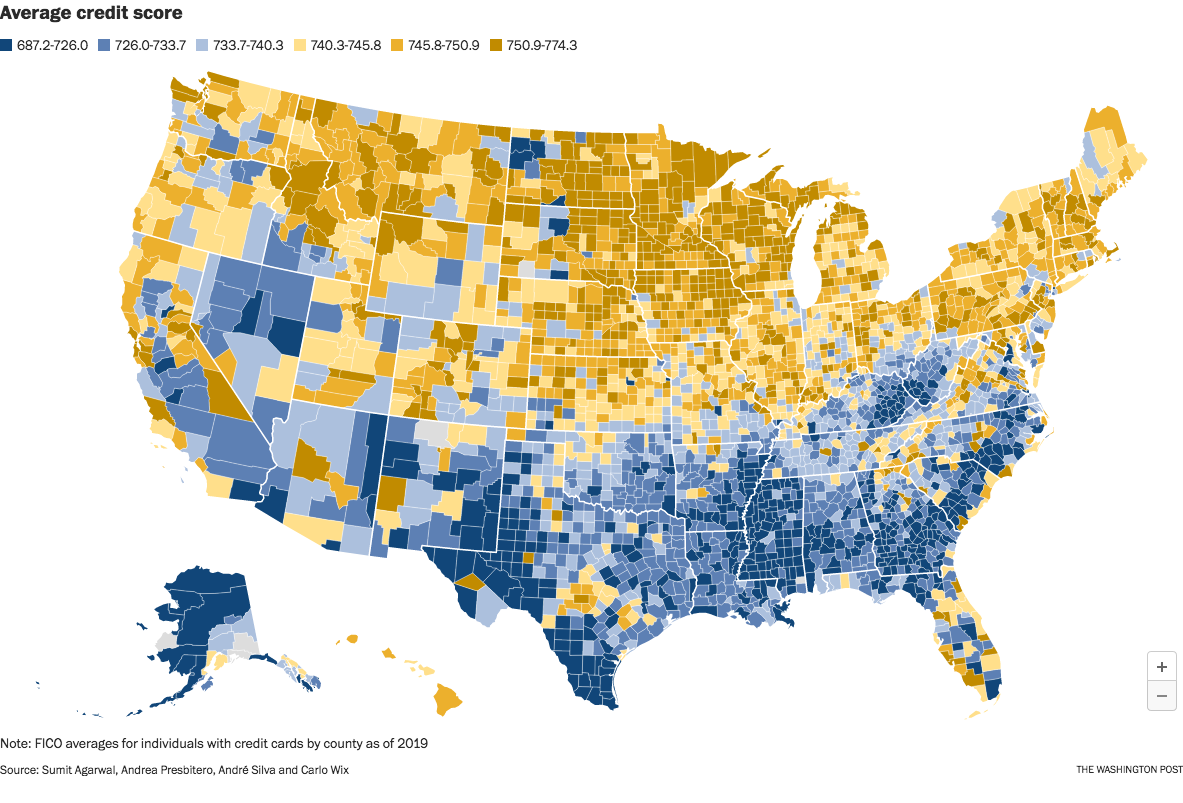Interesting data but I hate this map. The colours are nonsensical as are the categories
Data is Beautiful
A place to share and discuss visual representations of data: Graphs, charts, maps, etc.
DataIsBeautiful is for visualizations that effectively convey information. Aesthetics are an important part of information visualization, but pretty pictures are not the sole aim of this subreddit.
A place to share and discuss visual representations of data: Graphs, charts, maps, etc.
A post must be (or contain) a qualifying data visualization.
Directly link to the original source article of the visualization
Original source article doesn't mean the original source image. Link to the full page of the source article as a link-type submission.
If you made the visualization yourself, tag it as [OC]
[OC] posts must state the data source(s) and tool(s) used in the first top-level comment on their submission.
DO NOT claim "[OC]" for diagrams that are not yours.
All diagrams must have at least one computer generated element.
No reposts of popular posts within 1 month.
Post titles must describe the data plainly without using sensationalized headlines. Clickbait posts will be removed.
Posts involving American Politics, or contentious topics in American media, are permissible only on Thursdays (ET).
Posts involving Personal Data are permissible only on Mondays (ET).
Please read through our FAQ if you are new to posting on DataIsBeautiful. Commenting Rules
Don't be intentionally rude, ever.
Comments should be constructive and related to the visual presented. Special attention is given to root-level comments.
Short comments and low effort replies are automatically removed.
Hate Speech and dogwhistling are not tolerated and will result in an immediate ban.
Personal attacks and rabble-rousing will be removed.
Moderators reserve discretion when issuing bans for inappropriate comments. Bans are also subject to you forfeiting all of your comments in this community.
Originally r/DataisBeautiful
Maybe they're more color-blind friendly than the typical red-green scale? Idk, it's just a guess as to why these colors were chosen.
As a red green colourblind person this map looks awesome and the contrast is excellent
Agreed!
How about red and blue, would that look good to you? Because I make lots of data graphs and I often go for red and blue. Sometimes red and green I must admit. But mostly red and blue when using a two color scale.
So most of the time I struggle to identify purple as a colour that is distinct from blue. I think the biggest thing to help anyone see it would be the contrast in values, ie use a light bright red and a deep dark blue as the extreme values so that even someone with monochrome vision could see the difference. This is all just a guess though, when I struggle the most is with dark and desaturated colours where there just isn't a ton of information. With bright colours in good lighting telling purple from blue or bright green from yellow gets a lot easier.
Eta: there are a bunch of colour blind filters you can do on the computer, you could run your images through those to see what looks best
Thanks for your insights! I am not aware of people having monochrome vision though, is that a thing? I use a single-color scale when that is appropriate. But use blue and red often for positive and negative values respectively. No purple. Just shades of blue and shades of red.
It's very rare.
For fully color blind people I wished they could just do black to white with shades of gray in between.
There are colour scales that combine colours and intensities consistently, so that if you discard (or can't percieve) colour information, you still get a nice black to white scale. For a moment, I though the map used cviridis scale, which has this property and is designed to look as similar as possible to people with various variants of colour blindness. But then I realised that the scale used here has the brightest point in the middle, not on one side.
It doesn’t work well for someone with achromatopsia.
Cviridis or whatever they used here? Cviridis (and other scales constructed with the same philosophy) does.
I like the colors. Much nicer than typical colourscales
Yea who the fuck designed this color scheme. And the data points being so....random? Why not go by 50 or 100...
Could be a choice to reflect the distribution of different scores. I can't imagine credit scores are a very linear distribution.
It also doesn't go low and high enough. The first and last category should show everything below and everything above respectively.
I mean a 687 credit score isn't ideal but it's far from how bad it can get.
It's showing averages. Just because certain scores are possible for an individual doesn't mean there's a district somewhere with that average score.
My credit score is not shown here because there is no district with that average score.
Makes sense, thanks.
Pretty much a map of poverty levels and areas where minorities are concentrated, not surprising.
How do you explain Minnesota then?
First you have to purify yourself in the waters of Lake Minnetonka
Reasonably prosperous and not a lot of minorities?
Pre covid. I would like to see one more recent.
I'm sure nothing can be inferred from the dark blue region that follows the rust belt exactly
I blame it on the iron oxide
So you're saying that the Gulf Coast gives people bad credit?
/s
